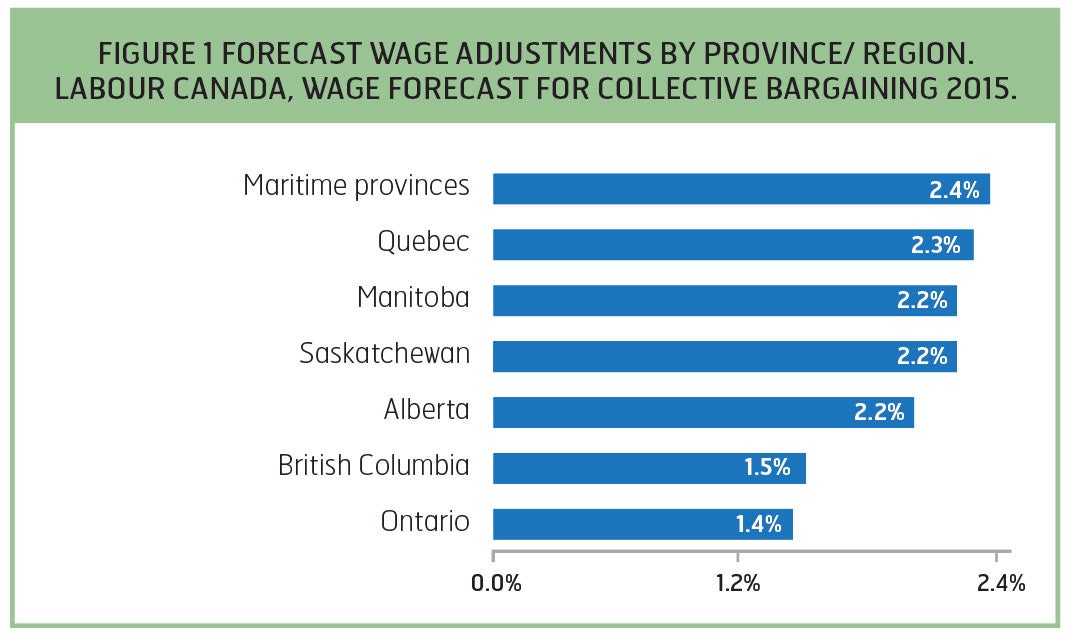
With the exception of Ontario, negotiated wage increases so far have been highest in the east and lowest in western provinces, as forecast (see Figure 1). Base wage increases in BC have averaged just 1.1 per cent so far this year, slightly below Ontario’s average of 1.2 per cent. Moving east, wages rise, up to an average of 2.3 per cent in Nova Scotia (see table below).
By sector, base wage increases are forecast to average just 1.6 per cent for education, health and social services, 1.9 per cent for public administration, and up to 2.7 and 3.0 per cent for workers in utilities and primary industries. These wage forecasts were developed before oil prices plummeted earlier this year. The oil price decline will undoubtedly reduce wage settlements in primary and associated industries.

Inflation rising again, fuelled by food price increases
Oil prices have gradually climbed back to $60 per barrel in the past few months, and with rising gas prices, inflation has also nudged up from the one per cent rates recorded at the beginning of 2015. The forecast for inflation this year is slightly below one per cent, but if oil and gas prices continue to climb, it will be higher. The lower Canadian dollar is pushing up consumer prices for imported goods, most immediately for food, clothing, and footwear. All these goods have increased at more than twice the overall rate of inflation in recent months.



